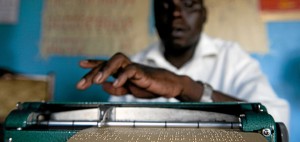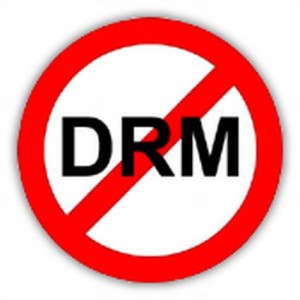In this blog post, Soumya Deshawar, a student of University of Petroleum and Energy Studies, Dehradun, analyzes the different aspects of fair use which have been provided as rights to the disabled people and the special provisions for them. The post also explains Digital Rights Management Systems, and how the disable people are being affected by it.
Copyright Law, which protects the rights of many on one hand, has become a barrier to access information on the other hand. This particularly is prevalent in the developing countries. Many developing countries that have signed the internationally accepted Intellectual Property Agreements set down the minimum standards for the protection of copyright. Most of the countries have neither yet incorporated such requirements into their National Copyright Laws due to socio-economic and political reasons, nor have they taken any advantage of the limitations and exceptions allowed in such international agreements. This concludes that many developing countries have no provisions in their National Copyright Laws for persons who are visually or print disabled, resulting in the restriction or blockage of access to information for persons with sensory disabilities, thus overriding their fair use rights. Many of such disabled people are distant learners because of their inabilities.
“India Is First to Ratify the “Marrakesh Treaty” Easing Access to Books for Persons Who Are Visually Impaired” [1]
India became the first nation to approve the Marrakesh Treaty for facilitating access to the published works for blind people, the ones who are visually impaired, or are otherwise print disabled. Till date, more than seventy-five states, who are the members to WIPO have signed the Treaty that was adopted on 27th June, 2013 by means of a diplomatic conference that was organized by WIPO and was hosted by the Kingdom of Morocco in Marrakesh. This treaty will be taking effect after twenty ratifications are presented to WIPO. India was the first to officially notify WIPO of its ratification.
[WIPO Director General Francis, Gurry exclaimed, “We congratulate India on its ratification of the Marrakesh Treaty and hope this ratification will be the first of many. When the Marrakesh Treaty takes effect, the lives of people who are visually impaired around the world will be enriched.”India’s Permanent Representative to the United Nations in Geneva, Dilip Sinha said, “India supports the Marrakesh Treaty for its human rights and social development dimension. The speedy ratification of the Treaty reflects India’s commitment to facilitating access to published works for the millions of blind, visually impaired and otherwise print disabled persons.” He further added “We hope other countries will follow India’s lead quickly so the Treaty can enter into force and we begin to see real and tangible benefits for the world’s blind and visually impaired community.”][2]
This treaty facilitates the access of published works to the persons who are blind, visually impaired, or in any other way, are print disabled and addresses the “book famine” by calling for its contracting parties to implementnational law provisions that authorize the reproduction, circulation and facilitating the availability of published works in formats that are accessible. An example of such formats is Braille, through boundaries and exceptions to the rights of copyright holders.
This treaty also consists of provisions for the interchange of such format works that are accessible, across borders by institutions that attend to the people who are blind, visually impaired, and print disabled. It will synchronize limitations and exceptions so that these institutions can function across borders. The fast production of such works in accessible formats should elevate the total number of works existing so that it eliminates the replication and increases efficiency.
The Treaty also intends to facilitate guarantees to authors and publishers that the system will not uncover their published works for any misuse or their distribution to any person other than the actual beneficiaries. The Treaty restates the prerequisite that the sharing of works to cross-borders, that have been created keeping in mind the limitations and exceptions, must be limited to certain exceptional cases which do not clash with the usual exploitation of the work and do not vaguely prejudice the legitimate interests of the right holders.
Background
There are some 285 million persons in the world who are blind and visually impaired as per the World Health Organization, out of whom, 90 percent reside in developing countries. A survey conducted by WIPO in 2006 revealed that less than 60 countries have limitations and exceptions sections in their national copyright laws that mark special provisions for the ones who are visually impaired.
The findings of World Blind Union conclude that, out of the millions of books published each year in the world, not more than 10 per cent are made obtainable in formats which are accessible to the people who are visually impaired.
Special Provision for Access to the Disabled
Compulsory License for the Disabled
Section 31B of the Copyrights Act, 2012 lays down provisions for the compulsory license in works for the help of the disabled. The Copyright Board, on a request for a CL by anyone working for the benefit disabled on the basis of profit or for the purpose of business shall dispose of such an application in a period of not more than two months from the date on which the receipt of application is provided.
The Compulsory License so issued must stipulate the means and format of publication, the term of the compulsory license and the number of replicas that may be provided including the royalty to be delivered.
Fair Use Rights for the Disabled
The clause (zb) lately added to the section 52(1) of Copyrights Act, 2012, provides for fair use of the published work for the benefit of the people who are disabled. It enables the adaptation, reproduction, issuance of copies or communication to the public of a work in any format that is accessible to the disabled to access the works comprising of sharing with any disabled person for personal use, educational purposes or research. These rights are available to all the people or organizations that are working for the benefit of the disabled persons.
Digital Rights Management Systems
Digital technology has the potential to transform the lives of sensory-disabled people. For example, the synthesizers that convert text-to-speech allow the words displayed/typed on the screen to be read out loud and the images so displayed to be described orally. This allows the blind people to understand the text by hearing. Also, software that allows a computer to respond to the commands given orally, instead of written commands by keyboard or a mouse helps the visually impaired people to operate the computer with ease. Screen readers which decode the electronic text into Braille are also available.
Awkwardly, DRMs restrict the above activities. For instance, e-books from Adobe have the inbuilt capacity to be read out loud by a computer, but the owners of rights use technological protection methods to turn off this application by Adobe. These measures block the access for blind people, even when they have authentically purchased the original work. Such things override the exceptions provided by copyright laweven when no legal barriers exist, and create technological barriers. International IP agreements and national laws in some countries prohibit users from evading or bypassing measures for protection for legitimate access purposes.
Conclusion
People, who are sensory-disabled, should be authorized to transform material into accessible format or media without seeking copyright permission from the owner of rights, unless he is facilitating the suitable accessible version under the same terms and at the same time as to the normal sighted-persons.
Copyright laws should be able to protect the rights of persons who are sensory-disabled and not just create vehicles for seeking permission. They should be self-sufficient in providing appropriate limitations and exceptions to ease, and not restrict, the access to knowledge. Also, the balance between the rights of information-users and just demands of rights-owners must be reestablished. Only then can it be possible for the persons with sensory-disabilities to get a fair deal.
Footnotes:
[1]http://www.wipo.int/pressroom/en/articles/2014/article_0008.html
[2]http://www.wipo.int/pressroom/en/articles/2014/article_0008.html














